CAUTION: This is an opinion post that purely expresses individual opinions and doesn’t intend to hurt anyone’s sentiments.
Cement is hailed as the ultra-modern building material, coming together with steel to reach new heights that mankind has never dared to reach before. In only about hundred years of its existence, cement has acquired the trust of the masses to the point where people cannot fathom the fact, that natural materials which have lasted for thousands of years even before cement was born, can safely be used to build. This article does an investigative study of this extensively used grey matter and analyses the truth behind it.
The face of modern architecture!
Cement has dramatically changed the face of architecture on our planet and has become an indispensable part of modern buildings. Where once every region had a unique identity of indigenous buildings which responded to the climate, local resources, skills and culture, cement brought with it standardized, homogenized homes. Irrespective of the region they belong to, they all look alike. One cannot differentiate between skyscrapers in New York and the ones in Dubai. The impact that this recent omnipresent material has on us and our homes is quite damaging. The drastically changing natural landscapes and the eyesore created by artificial skylines are matters of grave social and environmental concern.
India has an exceptional diversity of natural buildings which connected people together with wisely designed spaces having courts and plenty of open areas. This allowed nature to be a part of the house and offered interactions between neighbours. Verticality has now disconnected us not only from nature but also from our fellow human beings. In the race to build more and more in less and less space due to space crunch in urban settings, many buildings are now suffering from the “sick building syndrome”. Apart from the urban scene, it has also infected our villages. All thanks to government yojna’s, that aid this infiltration, fueled by the social pressure to have a pakka home as a sign of prosperity. The issues of extensive urbanization are being identified all over and many countries are now working towards resolution of these problems, yet India again treads on the same path that the west has tried and rejected.
Why High?
The most popular argument made in favor of cement is the freedom it gives buildings to touch the sky, making hundreds of story towers a reality. But to get a holistic understanding of the situation, one needs to analyze if this is the need that solves our problems or merely a want that satisfies our ego.
High rises are said to be the ultimate solution to accommodate the ever increasing population in a limited space. But the root of the problem lies much deeper. Now looking at reality of a city like Mumbai, despite the rampant construction of skyscrapers, 1.2 crore completed homes are lying vacant, even though there is acute housing shortage. Moreover the rising number of slums in cities are an indication of the failure of the current construction industry where housing crisis prevails despite of numerous skyscrapers being built. The stark disparities are clearly evident, yet we choose to look the other way. The entire system of real estate and the overall idea of such a city is questionable. Evidently, high rises are not the solution to our housing problem, and neither are rampant unplanned cities. These are uninformed opinions that have become popular because of what seems the solution when looked at problems superficially. These issues are connected with economic injustice, social stigmas and the lure of the city glitz that increases the density of these urban areas.
High In Mud?
Having understood the need for tall structures, if we look back at history, many massive structures have been built using natural materials. Multistory mud structures are common in dry arid regions. The huge scale of bridges and underwater aqueducts are feats of marvel to name just a few. We still revere these wonders as a part of our heritage.
Although we question the need for a tall building to address the problem of housing shortage, it is really possible to make long-lasting tall structures in natural materials. Our impenetrable forts, royal palaces and tall towers of ancient kingdoms prove this point. Earth construction techniques have been to known about 9000 years ago. Many traditional natural buildings have withstood strong earthquakes and other natural calamities that the modern materials do not stand a chance. There are many examples that exist to date that demonstrate the durability of traditional buildings. On such is the natural buildings ‘Bhunga’ of Gujarat who with their design and material usage survived severe earthquakes. In village Sardarsheher, in Rajasthan lime is still alive and thriving, so are many untouched villages in India which are repositories for natural building solutions.
Cement: What, When, How?
The timeline of building materials used by man shows all the materials that man has been using since times immemorial. The scale of the timeline is self-explanatory where cement stands in the long life span of building materials. Portland cement as we know it arrived just about a century ago. Before the discovery of Portland cement, natural cement also known as Roman concrete was used, which was achieved by burning a mixture of lime and clay. Since the properties varied from region to region, the need for standardization for the purpose of quality control arose. Now, cement is manufactured by calculatedly combining calcium, silicon, iron and aluminium to achieve a standardized mix.
With corporatization of cement, it also became a part of the 5 year plans increasing the number of manufacturing industries and consequently making it the most dominant building material. Just like how adding chemical fertilizers, the green revolution began that ruined our farms and the lives of our farmers with a lure of a modern world. With a promise of increased food protection and better lives, all claims eventually turned out to be to be hollow. They were only serving the interest of the industries manufacturing those chemicals. Similarly, a grey revolution also started brewing, without any forethought of the implications these two would have on our health as well as our environment. Mono-cropping and Mono-concrete became the latest trend whose detrimental consequence no could have imagined. When companies had their interests, set up huge plants, it became necessary to spread this material far and wide. Advertisements subtly brainwash people into believing that this cement has life there is nothing that can break it started surfacing. This message started getting ingrained in us that the only way forward into this modern era is cement.
Cement cannot work without sand, and sand mining over the years have caused major and drastic shifts in our rivers. Although the sand is a natural material, the strain on it by the building industry is immense, leading to impossible quantities of sand in demand. So much so that there is illegal mining of sand happening all over our country taken over by the sand mafia. We began importing materials from different places which had available resources in abundance increasing the embodied energy of the materials.
Lime: The Oldest Cementing Material Known To Man.
Building before the advent of cement:
The use of lime started long back when they built palaces, forts, domes, vaults, which have lasted for thousands of years without any cement. Many techniques were implemented like grinding, beating and fermenting lime for long periods of time and other herbal juices to add strength. All this gave enhanced results while using lime. Compared to cement the processes used in lime are time-consuming and labour intensive but at the same time beautiful and rewarding.
What makes lime so sustainable is that it goes through a process called the lime cycle where the carbon dioxide generated during the manufacture of lime from limestone is absorbed back converting the lime used in mortars/ plasters back to limestone after a long period of time through a process known as carbonation. Admixtures developed throughout the world, which are natural extracts of herbs help impart desired properties to lime mixes.
If we look back at how we used to build before cement, there are many answers. Every region in our country will have its own answer. There are designs of homes that tackled the climate perfectly, used locally available skills and resources beautifully and what’s more, if they got destroyed re-used the materials to build a new one. Since building a home was a community affair, the strain of building was transformed into a pleasure of community gathering livening the space with folk songs and chats. Even if you let the debris be, the natural materials would just become a part of the soil. We could still use these solutions that have been tried and tested for millions of years as compared to a non-time tested material like cement whose negative points clearly outnumber its advantages.
Environmental impact:
In the manufacture of 1 tonne of cement 2.5 tonnes of CO2 is produced, that is 10% of the total CO2 emission. Today cement has to travel an average distance of 600 km to reach a building site! The process of manufacture of cement and the processing of raw materials used to require extensive energy and high temperatures giving off gases and highly toxic particles. Studies have confirmed that cement industries are one of the fastest and major contributors to CO2 emissions. These continue to flourish, without any regulations to keep the levels of emissions in check.
What do we do?
This is the time to have this uncomfortable conversation amongst ourselves and question the conventional norms. Solutions have to be collectively formulated as individuals, communities and a nation to tackle the issues at hand. We need to make more people aware that the problems we are facing are created by our ignorance and apathy. More cement is choking up the nerves of our planet, our drainage our rivers are suffering because of our folly. One way forward is to look back at the river of knowledge that our ancestors have left behind.
How much sense is there in building with cement?
Concrete cancer is a real disease that affects all buildings. The nature of concrete is to wick moisture and since it doesn’t breathe, it contains and holds back the moisture without releasing it and over years this rusts the iron in RCC and inevitably the building fails. It doesn’t show, like a secret it only reveals itself at the last moment. Sudden failures of buildings are common. Sooner or later all concrete buildings would meet the same fate. Moreover, our buildings hardly need the strength that cement offers, we are over deigning to exploit the expensive (not just in a monetary sense) material.
Cement in natural buildings
Nothing explains better than Babara ji’s article on cement in natural building the hazards of using a little amount of cement in natural buildings. Most of the environment-friendly elitist organizations in our country are aimed at making the walls look and feel like mud while losing out on the entire point of building with mud. Adulterating it with cement not only loses the authenticity of the mud build is unsustainable but also may be extremely dangerous for your building in the long run. Where mud buildings are supposed to be affordable, the weekend getaway home end up being more expensive than even conventional homes. A trend of hybridization is slowly picking up where natural buildings have merely been reduced to the aesthetics and a market gimmick of eco-conscious people. This trend began with following about 25 years ago, borrowing a few philosophies from the west and many researchers ended up with answers to stabilize the mud with cement. The purity of mud is lost and so is the inherent nature. The mud is then unable to breathe and becomes suffocated.
On the contrary, mud and lime are self-healing, cracks are good, and you can always fill the mud cracks up with more mud, cement cracks can be highly dangerous for the integrity of the building.
Like any other consumerist goods, the need for standardization in the building industry arose, making easy machine-made, mass-produced factory homes. Like mono-cropping, mono-building became the fad, making match stick box homes, suffocated homes and unhealthy owners.
The hideous pineapples dropped towels, and obscene curves and pointy lines with façade treatment have been the new trend for making buildings stand out and intimidate users. Too much use of glass heating up the building and then using air-condition 4 times more to cool the self-heated building, is an indication of where we have lost our basic common sense and that we find this quite normal. Our architecture represents our tyranny, the social injustices and the lack of peace and happiness in our lives. Running in a race which no one knows the finish line is. Our buildings are becoming like us, generic and colourless clones of each other, bland and tasteless.
The alternative building sector in our country is relatively scarce and most add mud to cement, yet call them ‘eco-friendly homes’ The adding of cement in stem walls only wicks moisture and creates more problems than solves. Our dear natural builders need to evaluate what the term natural building is. Mud becomes suffocated and cannot go back to the earth once it breaks down and also cannot be reused. The need of the hour is for the conscious architects/non-architects/ people who want to build their own homes to accept natural materials the way they are and spread the message in our practices. With a collective effort of working toward the solution. We have lost much of the knowledge we had, but we may still be able to retrieve it with conscious effort. Instead of taking the easy way out, as natural builders, we should seek answers that will make us confident in using natural materials in their pure form.
When cement came, it brought a promise of a modern world, of permanence, of beautiful skylines and glittery glamour like in the west. A more analytical study with an open mind reveals that the claim is a hollow one and the shimmer is only on the surface of these façades. The life of a concrete building is 50-60 years which when compared to the embodied energy is way too little. It wouldn’t pay off its carbon footprint even if the buildings were to last thousands of years. Since concrete buildings is a recent phenomenon, the amount of toxic debris that we’ll get is unimaginable. And there is no forethought to what happens once these humongous buildings pass their expiry date.
Only now after the result of our rampant development and mindless concretization are showing effect in the form of bad drainage causing floods and manmade calamities we are realizing that this is a real issue that needs our immediate attention and concern. All surfaces are mindlessly paved in concrete leaving no possibility of water absorption causing floods even with the slightest rainfall in cities while our villages face drought!
In the wake of the environmental crisis, we need to re-evaluate our choices and make informed ones. It is not just cement as a material that poses a problem, one has to connect the dots to view the whole picture clearly. Industrialization, global warming, unsafe food, fast fashion, etc. are all interconnected issues that stem from one another with the system that dictates us. And the drastic shift in our lifestyle increasingly mechanical life and other issues that are now deeply rooted within our society that has graver implications. We can choose simpler over extravagant, peace comes with a harmonious society that is well-rooted in its origins.
But with more herbs and hope, a revolution is possible in natural buildings. With a lot of positivity and encouragement, slowly the number of people who are questioning the society that we have created, are rising. We have hope as long as there are masons and old gems who will help and guide us in this journey. The Vedas prescribed methods that have worked for centuries and using their help we are able to achieve strength in our walls and our homes. Lime is such a fantastic natural building material and possibly a solution to all our cementing needs. Possibilities are infinite using our finite resources, it depends on us how we choose to use them. Consistent work is needed, taking small steps in our day to day lives, it may even take a long long time. Instead of condemning cement as a material, we should look at mud and lime as positive answers which will help us work towards constructive solutions in building resilient shelters for a safer planet with love and kindness.
Resources:
The reality of real estate: http://www.firstpost.com/business/1-2-crore-vacant-homes-one-number-tells-us-wrong-indian-real-estate-2220612.html
Cement and CO2 Emissions: http://www.rammedearthconsulting.com/rammed-earth-cement-co2.htm
Bhunga –earthquake-resistant homes: http://aina.wikidot.com/documentation:traditional-circular-house-form-bhunga-in-kutc
Why cement should not be used with natural buildings: https://www.lowimpact.org/why-cement-should-never-be-used-on-straw-bale-houses/
Building materials of ancient India: https://www.scribd.com/document/235812176/Building-Materials-of-Ancient-India

Biju Bhaskar & Musharaff Hebballi
This article is by Natural builder Biju Bhaskar & Musharaff Hebballi. This post is part of our Ageless Village Homes,.


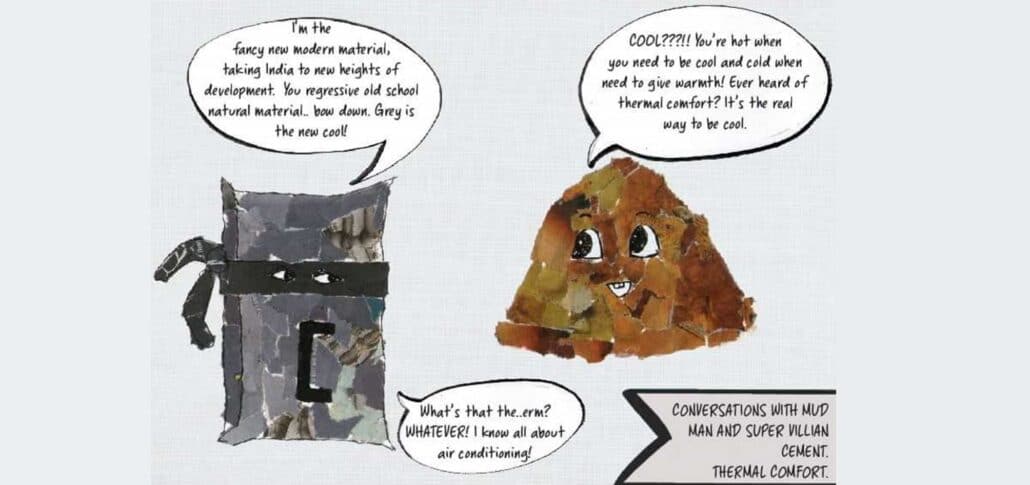
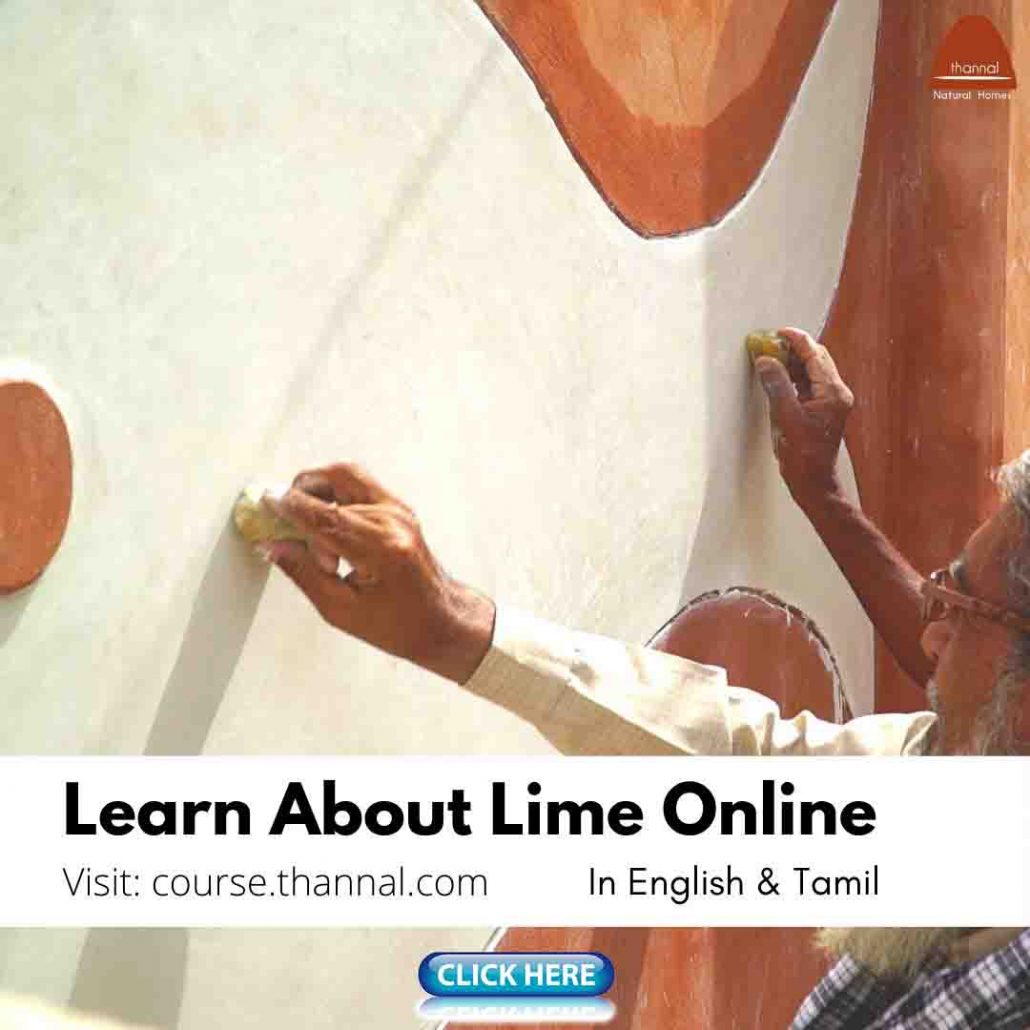


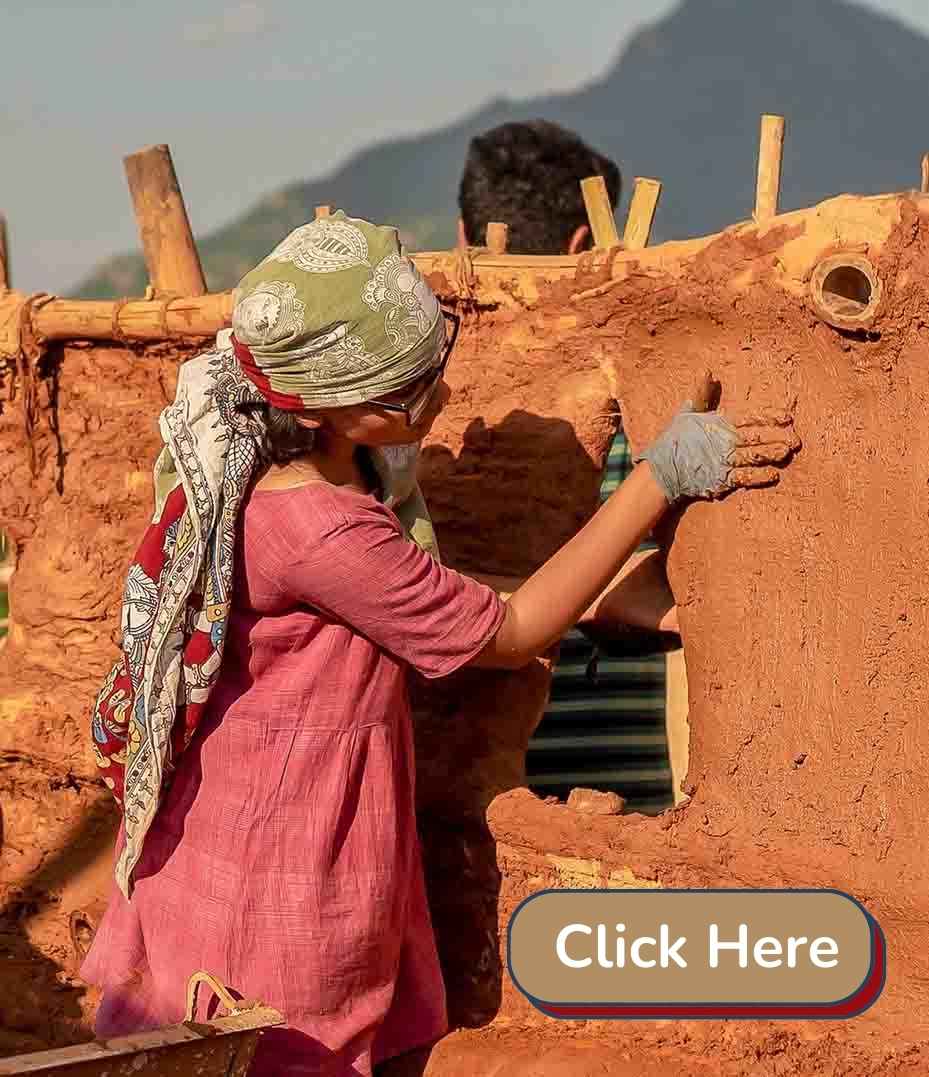
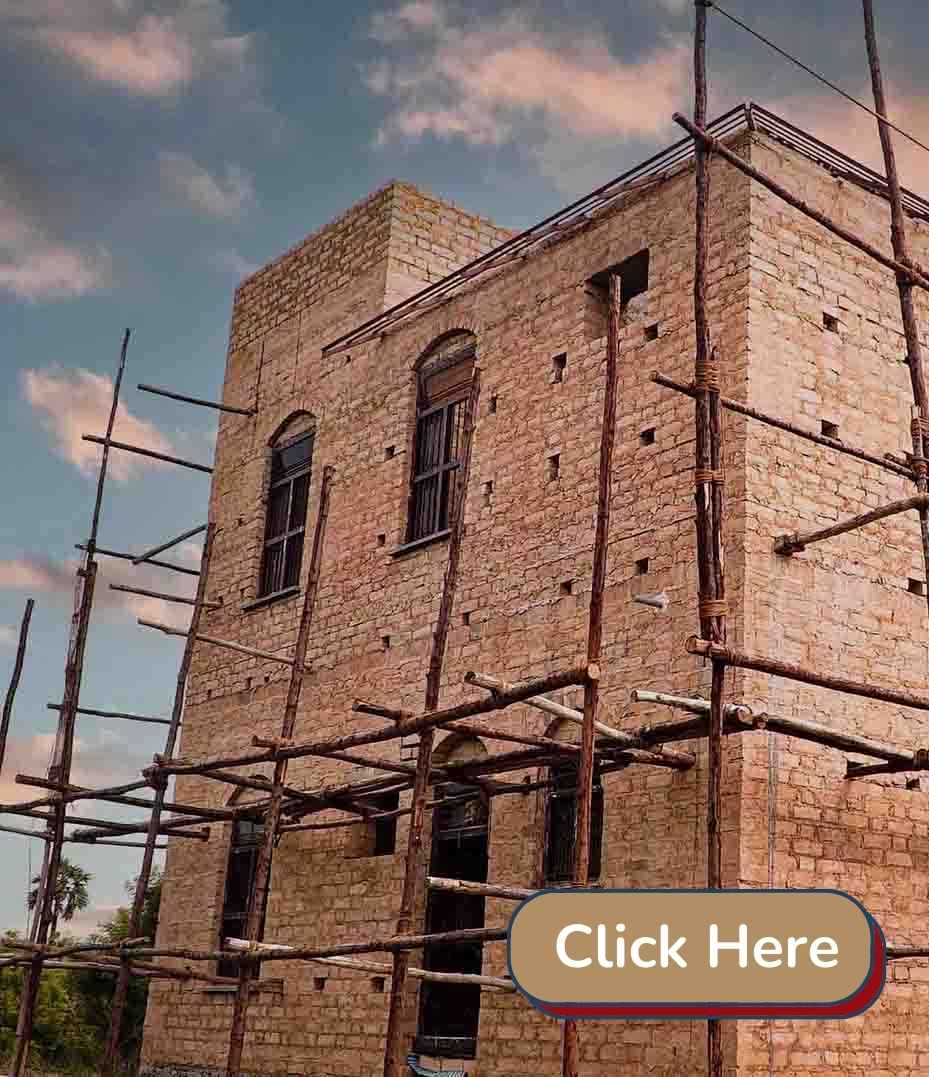
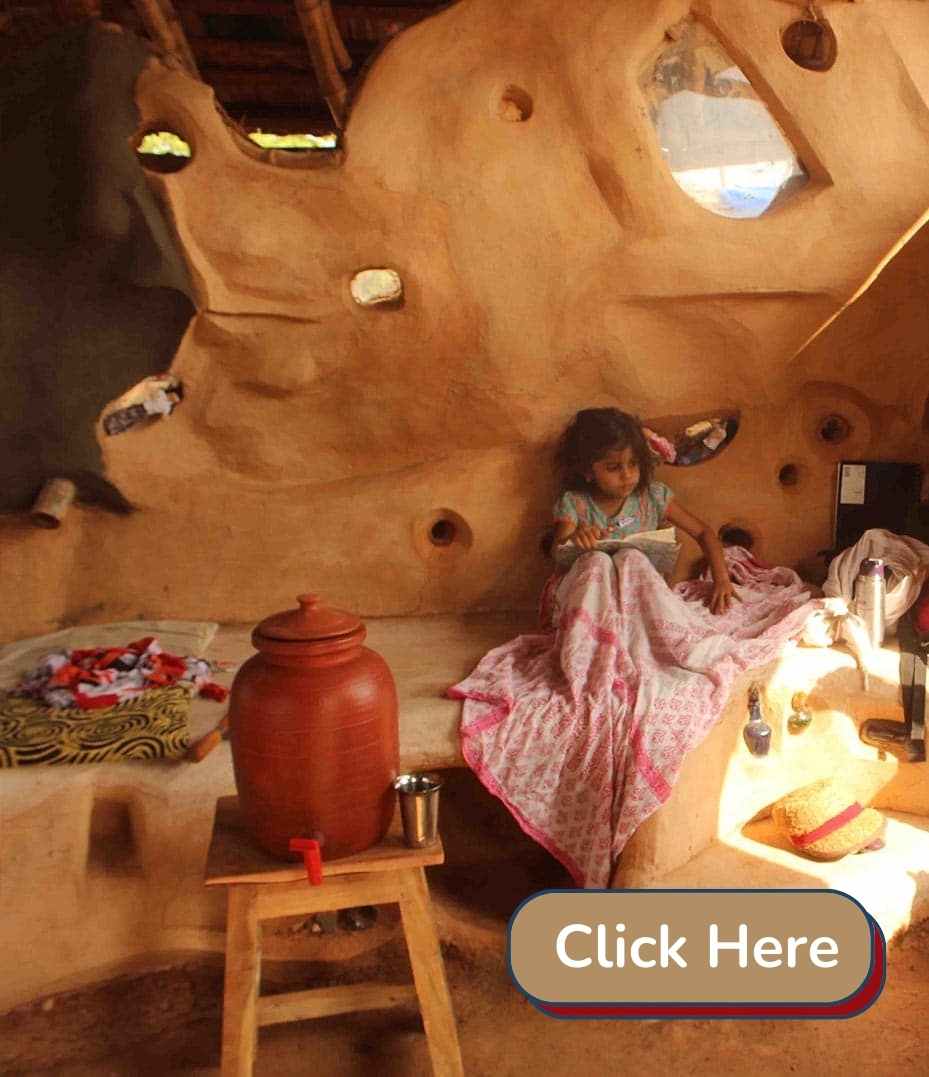


3 thoughts on “inGREED with cement”
Namaste Pranab,
Thanks for reaching us. You can conveniently learn from us through Online Tutorial Series. The step-by-step process in this video course could help to do practice in your place. https://thannal.com/natural-building-online-video-courses
Surely, your sponsorship could help someone who looking for financial aid to attend our Hands-on Workshop.
Best,
Karuppasamy
For Team Thannal
Namaskar
I am highly impressed with your article though I am aware of all the subject matter.. I have the same opinion as your team ..I feel I am worthy in joining your team.. anyway, I am looking for pure mud house makers as can’t manage time myself n lak of experience don’t allow me to start my own house.
I have decided few years back to explore this word of natural building n got a lot of knowledge over years.. happy to find you on way.
We shall succeed, I had also analysed how the concept of city itself is questionable as it brings all dimensional unsustainability.
Soon I will take one of your courses too, want to even sponsor someone who is willing for physical workshop with you.
Many shall catch up you.. please continue your efforts ..they are burning need for our children.
Thank you.
Hyderabad
crystal clear … great to hear the most inspiring words about natural buildings